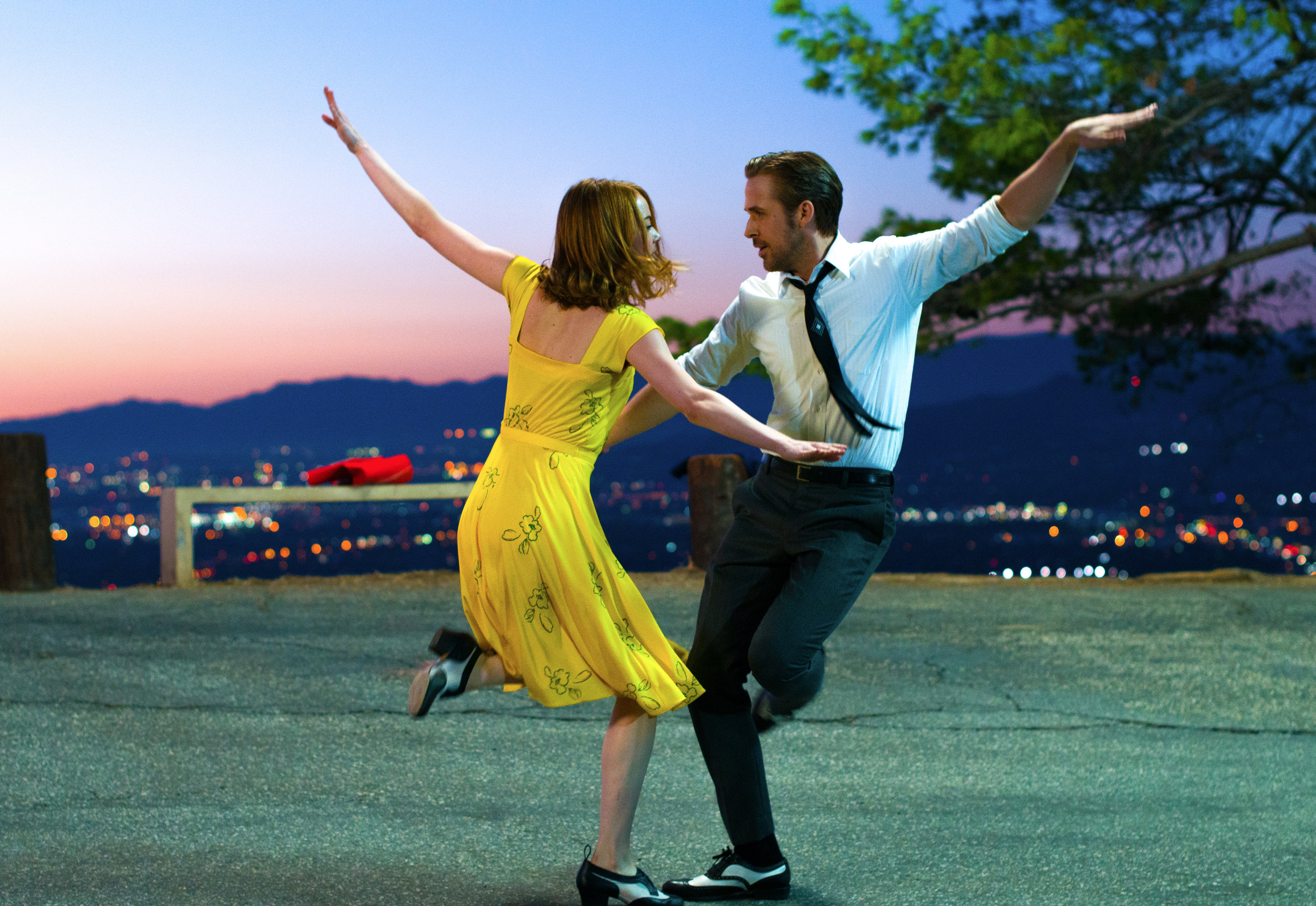La La Land Cinematographer Goes Wide to Evoke Classic Hollywood Look
Oscar frontrunner La La Land declares its affection for old-school Hollywood spectacle in its very first frame, when a retro-looking PRESENTED IN CINEMASCOPE logo takes over the screen. From that moment on, writer director Damien Chazelle’s movie musical unspools across an unusually wide screen as an expertly crafted love letter to mid-century movie making. The challenge for Swedish cinematographer Linus Sandgren? He needed to capture present Emma Stone's struggling actress and Ryan Gosling's downcast jazz musician against a modern-day Los Angeles backdrop that assumes fairytale like splendor once the sun goes down.
Sandgren, who shot American Hustle and Joy for David O. Russell, remembers going all in on the Old Hollywood aesthetic during his first meeting with Chazelle. "Damien wanted make the movie the way they would have done it back in the 1950s for Singin' in the Rain or A Star is Born," he says. "If you brought a filmmaker from back then to now, they'd ask for the best camera and the widest screen, they’d shoot on film and they'd capture the performances in camera without using blue screen. That was the attitude we brought to La La Land."
Following the action with smooth-moving Steadicams and cranes, Sandgren shot 35 millimeter film through custom-ground Panavision anamorphic lenses intent on conjuring a light-infused atmosphere well-suited to the show biz dreamers at the heart of the story. Sandgren explains, "Digital video captures reality whereas the film medium just naturally captures the image in a heightened, magical way that looks more like an impression of reality, or maybe how you remember it."
Celluloid film stock also enabled Sandgren to extract maximum power from Emma Stone's red hair and blue eyes, Mary Zophres' eye-popping costumes and the city's violet-streaked sunsets. "Shooting on film wasn’t really about being nostalgic," he says. "It was about capturing the richness of the color that digital video simply would not give you, unless you added to it during post production. Damien and I wanted to get everything in camera on the day because for me, 'We'll fix it in post' is like the worst thing."
Chazelle urged Sandgren to shoot big production numbers as long takes without the safety net of "B" cameras or fast-cut editing. In one especially charming shot filmed at dusk, Stone and Gosling danced for six uninterrupted minutes on a ridge overlooking the Hollywood Hills. Sandgren explains, "Damien wanted to shoot that scene at the most dramatic time possible, which was twilight between 7:20 and 7:25. A lot of people ask me, is that like green screen back there? It’s not. Everything you see really happened in camera during 'magic hour' because that's what the light in L.A. really looks like."

Sebastian (Ryan Gosling) and Mia (Emma Stone) in LA LA LAND. Photo credit: Dale Robinette
The actors trained three months to make their pas de deux look effortless. Sandgren and his camera crew rehearsed the moves for their crane-mounted camera twelve hours straight starting at seven in the morning. They then filmed the duet back to back five times, two evenings in a row, reloading 400-foot film reels every ten minutes. "Emma and Ryan rehearsed so much, they did the scene perfectly each time," he says. "Waiting for the perfect light was the only issue."
By design, La La Land metaphorically contrasts the characters' moonlit dreams with the glaring sun-baked realities of show business embodied in Los Angeles' somewhat schizophrenic landscape. Sandgren, who now lives in Los Angeles, observes, "It's pale and bright during the day, with all these telephone poles and gritty parts of town. But in the evenings, you get incredible night skies you might expect to see in some place like Greenland or Alaska! In La La Land we tried to capture this mix of beauty and nature and city you find in L.A. It's sort of an impossible combination, but beautiful too."



